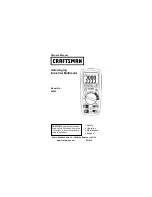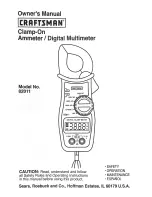
Operational Guide
69
DO Meter
Configuration
Salinity and Altitude Compensation
Temperature, altitude and salinity compensation are used for dissolved
oxygen concentration measurements (ppm or mg/L). When the water is colder,
it can hold more dissolved oxygen, when it is warmer it holds less oxygen.
Compensation for temperature-related solubility is done automatically using
the built-in temperature sensor within the DO probe and algorithms in the
edge meter. When water is measured at an altitude below sea level, oxygen
solubility increases, but above sea level the oxygen solubility decreases.
To compensate for this during calibration and measurement, the user must
provide the approximate altitude (in meters) in the SETUP menu. The settings
are in 100 m increments; select the value closest to the actual altitude. Some
examples of altitudes around the world follow:
Location
Meter
Feet
Sebkha paki Tah, Morocco
-55
-180
Lake Frome, Australia
-6
-20
Netherlands, coastal providence
-1 to -7
-3 to -23
Lake Michigan, USA
176
577
Lake Geneva; France, Switzerland
372
1220
Denver, CO USA
1609
5279
Mount Everest
8848
29029
The solubility of oxygen in water is also influenced by the amount of salt the
water contains. Seawater typically has a salinity of 35g/L and the oxygen
solubility is 18% less compared to fresh water at 25°C. By entering the
approximate salinity value, the calibration and subsequent concentration
measurement will be compensated to display the correct oxygen
concentration. A 18% error would result if the salinity value is not entered.
Note
: Salinity and Altitude have no effect on % oxygen solubility range.
Summary of Contents for Edge
Page 1: ...Instruction Manual Multiparameter Benchtop Meter ...
Page 92: ...Warranty 92 Notes ...
Page 93: ...Warranty 93 Notes ...
Page 94: ...Warranty 94 Notes ...
Page 95: ...Warranty 95 Notes ...
















































